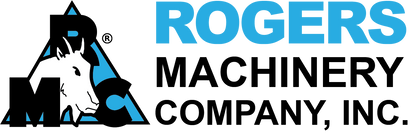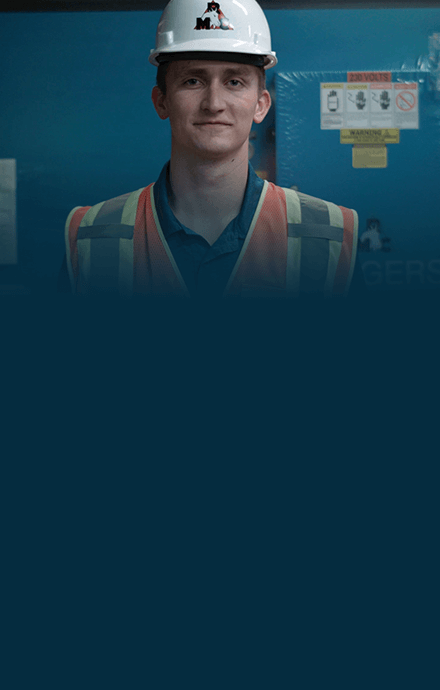Your Cart is Empty

Winery Doubles Production with Nitrogen Generation Upgrades
Winemaking is big business. When Oregon-based winery NW Wine Company was looking to double their bottling production, they turned to Rogers for a solution that would power a much larger operation.
This case study is written in conjunction with NW Wine Company.
Table of Contents
- Nitrogen Generation 101
- About NW Wine Company
- NW Wine Company Expands Bottling Line
- Sizing a Nitrogen Generator
- Working with Rogers
In 2021, the United States produced over 773 million gallons of wine. According to Statista, the U.S. also leads in revenue generated from the wine industry, at 52.7 billion U.S. dollars in 2022. Wine is big business.
Wineries use nitrogen to eliminate the wine’s exposure to oxygen during the bottling process and for blanketing tanks, and is critical to ensure product quality.
Key Takeaways
- Doubling Bottling Capacity: NW Wine Company expanded from 350,000 to 700,000 cases annually by adding a second bottling line supported by a new nitrogen generation system.
- Eliminated Dewar Dependency: Transitioning from liquid nitrogen dewars to an on-site nitrogen generator reduced logistical challenges, freed up floor space, and ensured a consistent nitrogen supply.
- Customized Equipment for Food-Grade Quality: The new setup includes a VFD-controlled KRV 40-125 compressor with food-grade oil, multiple coalescing filters, a Parker N2-80P nitrogen generator, and a Zeks refrigerated dryer, ensuring high-quality nitrogen for bottling and tank blanketing.
- Importance of Proper Sizing: Correctly sizing the nitrogen generator was crucial to meet the winery's demand without compromising purity or causing compressor inefficiencies.
Nitrogen Generation 101
How does nitrogen generation work? Here’s a crash course:
- An air compressor is used to compress air from the atmosphere to high pressure, which will then be processed to produce nitrogen.
- The compressed air is filtered and dried in a pre-treatment unit to remove moisture and impurities.
- The dried compressed air is then passed through a nitrogen membrane unit, which consists of a bundle of hollow fiber membranes. The nitrogen molecules are separated from the other gases due to their smaller size and permeate through the membrane to the center of the fibers, while the other gases are rejected and expelled.
- The generated nitrogen is stored in a nitrogen storage tank for later use.
- The stored nitrogen is then distributed to the end-user through a piping system and/or gas cylinder.
- A control panel is used to monitor and control the entire nitrogen generation system, including the compressor, pre-treatment unit, nitrogen membrane unit, and storage tank.
RELATED: COMPLETE GUIDE TO ON-SITE NITROGEN GENERATION SYSTEMS AND BENEFITS

About NW Wine Company
NW Wine Company, founded in 2003, contains 1200 acres of planted vineyard in Dundee Hills, Oregon. The winery was the first fully specialized custom crush winery in the Willamette Valley. They bottle 3 of their own brands as well as for outside vineyards and companies.
Before making the switch to generating nitrogen, NW Wine Company had stored nitrogen in dewars. Dewars contain liquid nitrogen that is managed by a third-party gas company who replaces empty dewars with full ones. Depending on levels of nitrogen consumption, a dewar may last as short a time as one day.
In addition, dewars are constantly venting into the atmosphere to keep pressure levels inside the container manageable. Dewars take up valuable floor space, and the more dewars you have, the more expensive and cumbersome the process can be.
“When you have twenty dewars, that takes up a lot of real estate,” Travis Cameron, maintenance manager for NW Wine Company, explained. “Just the shuffle of getting [the nitrogen supplier] on the phone and getting [the dewars] to be there at a certain date doesn’t always work out. So having a nitrogen generator is really nice.”
Recently, the winery needed to expand its operation, adding a second bottling line with twice the capacity of the original line. With twice the wine to bottle, they needed twice the nitrogen. The winery wanted a nitrogen generator capable of supplying the entire winery, not just one bottling line. Cameron contacted Rogers to get the process started.
Watch The Video Testimonial
NW Wine Company Expands Bottling Line
The original bottling line — still in operation — uses a 50hp Rogers K-Series compressor and a nitrogen generator from Parker. The nitrogen is used for both bottling wine and blanketing tanks.
Output was intended to double with the expansion, from 350,000 cases of wine a year to 700,000 cases a year. The new, larger nitrogen generator is able to supply nitrogen to both bottling lines. The expansion has also garnered the attention of other large wineries in California looking for bottling services. The entire system includes:
- A VFD controlled KRV 40-125 oil-lubricated air compressor mounted on a 200-gallon tank. This compressor was outfitted with food-grade oil as well as 3 extra coalescing filters to ensure product quality.
- 400-gallon dry tank
- 3 coalescing purification filters
- Parker N2-80P nitrogen generator
- Water separator and Zeks 200 HSG refrigerated dryer with coalescing filter and auto-drain
- 400-gallon vertical receiver tank
NW Wine Company’s system works like this: the compressor provides compressed air to produce Nitrogen. This compressed air enters a wet tank, then through a coalescing filter before going through the refrigerated dryer and into a dry tank.
After the dry tank, the compressed air goes through 3 additional filters to purify the air creating clean dry air before entering the nitrogen generator. The compressed air then goes through the nitrogen generator and out through an additional coalescing filter to the nitrogen buffer tank. The nitrogen then returns from the buffer tank to the nitrogen generator for further purification & then out to the system.

Sizing A Nitrogen Generator
Selecting the right size of nitrogen generator is imperative to the output of your facility and lifetime of the system. If the nitrogen generator is too small for the system, it won’t create enough nitrogen to keep up with demand. Purity of nitrogen may also decrease.
Oversizing the nitrogen generator can lead to the compressor short-cycling, rendering it unable to provide a steady stream of air to the generator.
That’s where our experience comes in handy. Our sales engineers took data sheets from NW Wine Company, assessed their needs, and recommended equipment that was properly sized for their demand. We were able to work with their data to recommend the proper size of nitrogen generator for their process.
“There are a lot of wineries that have made the wrong move, put in the wrong [equipment] and not done things right. So it’s nice to have it done right,” Cameron said.
RELATED: VIEW THE WEBINAR: UNDERSTANDING THE COSTS OF LIQUID NITROGEN CONSUMPTION

Working With Rogers
Installation of the system was a success, and the bottling process has gone smoothly. Cameron, who has worked for NW Wine Company for 10 years, isn’t worried about scheduling service either.
Rogers service technicians have provided regular service to the winery’s equipment since the facility began using us for their compressed air and nitrogen needs. When he does have to schedule service, Rogers’ technicians are flexible with his demanding schedule.
“It’s always like ‘I’ve got this one day with this one-hour window. Can you help me out?’ And you always help me out with it, even if it’s on a Saturday or overtime,” Cameron said.
That’s why NW Wine Company has chosen Rogers for all their compressed air & nitrogen needs. With regular service and round-the-clock access to emergency technicians, Cameron can focus on running other operations throughout the winery.
You May Also Be Interested In
- Nitrogen Generation System Upgrade Helped A Pacific Northwest Brewery Save Thousands and Increase Production Efficiency
- Complete Guide To On-Site Nitrogen Generation Systems And Benefits
Meet the Sales Representative
|
Kyle Belnap, Portland Branch Sales Manager, Rogers Machinery Company. |






